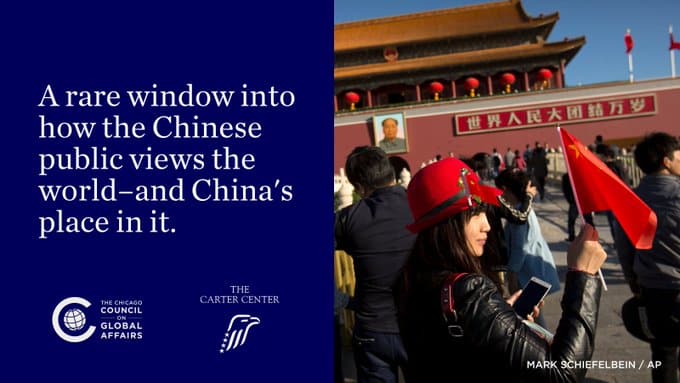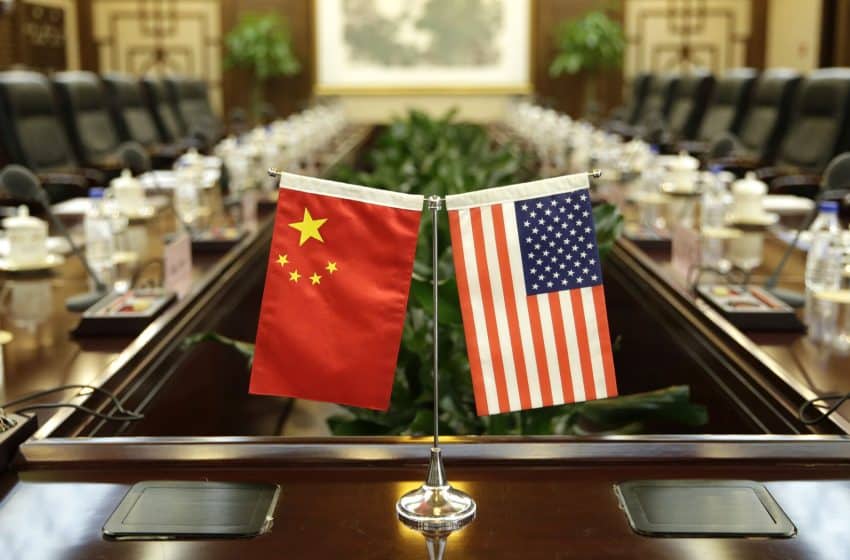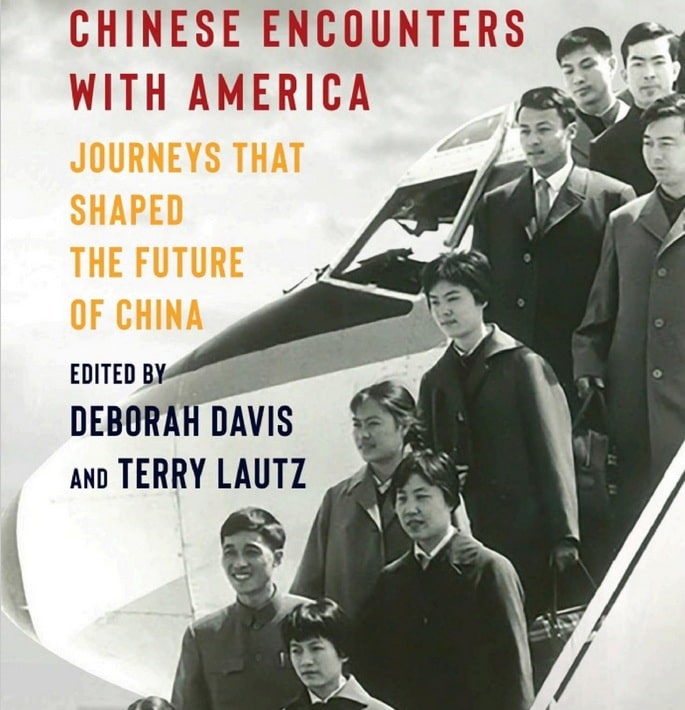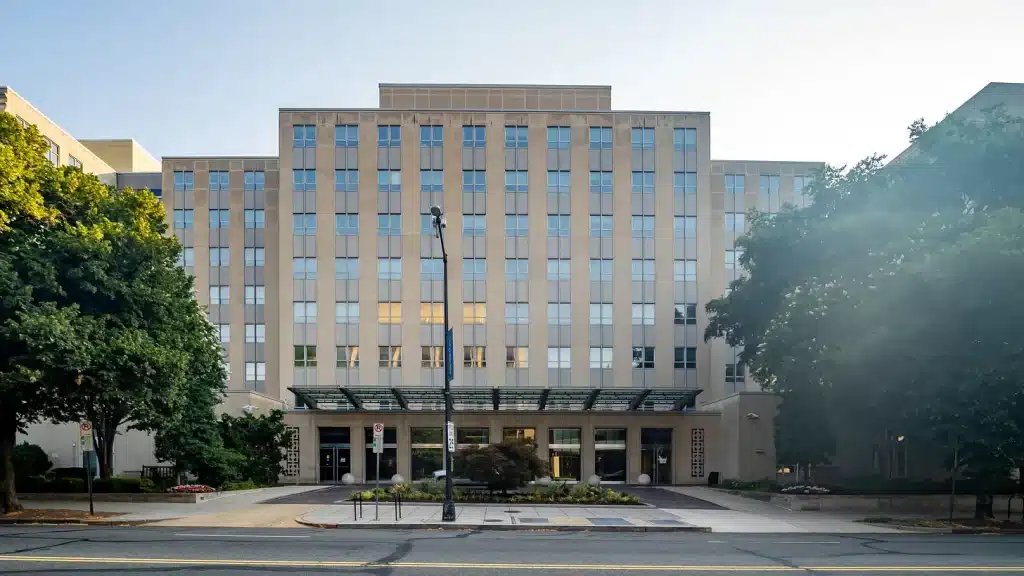Chinese Immigration to the United States: Past, Present, and Future
- Analysis
 Miranda Wilson
Miranda Wilson- 05/24/2024
- 0
Chinese immigrants represent the third largest national origin group among U.S. immigrants, less only than those from Mexico and India. And, as of 2022, about 5% of the 46.2 million immigrants in the United States are from China.
Although Chinese immigration has been on the rise for the past decade (the immigrant population from China rose by 647,000 in 2022), the number of Chinese citizens attempting to illegally cross the U.S.-Mexico border has skyrocketed in the past year. In 2023, more than 37,000 Chinese immigrants were detained for attempting to enter the United States illegally, more than the past 10 years combined.
This article briefly surveys the history of Chinese immigration to the United States and identifies possible motivations behind the skyrocketing number of apprehensions of Chinese immigrants at the border.
A Brief History of Chinese Immigration to the United States
Chinese immigrants began moving en masse to the United States in the 1850s, hoping to escape economic depression in China, strike gold during the California gold rush, and avoid continued fallout from the 1850 Taiping Rebellion that resulted in millions of deaths in China. Driven by high taxes as a result of the Opium War, crop failures, and a series of droughts, over 20,000 Chinese immigrants made their way to San Francisco in 1852. Concerned with immigration, California placed a high monthly tax on all foreign miners. Too high for some Chinese immigrants to pay, the taxes encouraged these immigrants’ transition to the service industry, opening up laundries and restaurants. Nonetheless, by the end of the 1850s, Chinese immigrants made up one-fifth of the population in the Southern Mines and contributed millions of dollars to the state’s revenue.
As the gold rush subsided, Chinese immigrants sought employment in a variety of sectors, including the construction of the Transcontinental Railroad. Chinese Americans and Chinese immigrants were instrumental to the railroad’s construction with roughly 15,000 involved between 1863 and 1869. The other immigrant group largely responsible for the Railroad’s construction was the Irish; between 8,000 and 10,000 Irish immigrants helped construct the Railroad from the eastern to western U.S. as Chinese immigrants constructed from the west to the east. Construction crews ultimately met in the middle in Utah. Working conditions were abysmal, and many laborers died due to the harsh winter conditions and unsafe construction practices. Others faced low wages and discrimination.
After the construction of the railroad, the United States entered a period of economic depression. As jobs became scarce, Chinese Americans experienced increased hostility. The peak of anti-Chinese sentiment in the United States occurred in 1882, when Congress passed the Chinese Exclusion Act, which barred Chinese laborers from entering the country. In 1888, Congress took the Act a step further, declaring reentry to the U.S. after a visit to China was impossible, even for long-term legal residents. These acts contributed dramatically to the worsened prejudice and xenophobia towards Chinese people in the United States. Not only that, the acts soured relations between the U.S. and China by violating the norms of an international treaty, the 1868 Burlingame-Seward Treaty, signed between the two countries. The Chinese Exclusion Acts were not lifted until 1943, in an effort to gain allyship during World War II. However, an immigration quota of just over 100 visas for Chinese immigrants per year was established, thereby limiting the number of Chinese people who could enter the country.
In 1965, U.S. immigration policy took another major turn with the Immigration Act of 1965 during President Lyndon B. Johnson’s administration. It eliminated the quota system that had prevented large numbers of immigrants from Asia, Africa, and various ethnic groups. This policy was a watershed moment for the U.S. and is often credited for the high level of diversity in the nation today. According to President Johnson, the Act opened the doors for “those who can contribute most to this country – to its growth, to its strength, to its spirit.” It created a preference system based on immigrants’ skills and family relations with U.S. citizens and residents. Since the policy’s enactment in 1965, 1.2 million Chinese individuals have migrated to the U.S. Notably, the large influx of immigrants that occurred shortly after 1965 was not from mainland China, but rather Hong Kong and Taiwan due to strict emigration policies on the mainland.
Later, President Jimmy Carter’s landmark 1979 decision to normalize relations with China shifted the demographic of Chinese immigrants once again. This time, it was Chinese officials who took the major step of relaxing emigration policies, making it easier for mainland Chinese to leave the country for the United States. The number of Chinese immigrants living in the U.S. doubled from 1980 to 1990, and doubled again by 2000. During this period, a large number of Chinese immigrants were students earning graduate degrees in America. For example, by the 1990s, around 50% of Cabinet ministers in Taiwan had degrees from American universities. Of course, not all students traveled back to China, some found work in the United States. Today, Chinese students are also traveling to America to earn both graduate and undergraduate degrees. As of 2024, there are roughly 290,000 Chinese international students studying at U.S. universities. Moreover, according to a survey from 2005-2015 from the National Science Foundation, 87% of Chinese doctoral students planned to remain in the U.S.
In the late 1990s and early 2000s, illegal immigration from China began to increase. While at much lower levels than over the past two years, there was a notable increase in Chinese immigrants crossing U.S. borders illegally and seeking asylum on the basis of family planning abuses due to the One-Child Policy (1979-2014). One famous incident occurred in 1993 when a boat called the Golden Venture carrying 286 undocumented immigrants from Fujian to New York was caught by authorities. Ten of the immigrants leaped from the boat and tried to swim to shore on the last leg of the journey, but ultimately drowned. The remaining 260 immigrants as well as 13 crew members were taken into custody, likely hoping to plead asylum. However, embarrassed by the lax asylum policies that drew so many Fujianese immigrants in the first place, President Clinton placed the passengers who were not deported into immigration detention facilities. Four years later, Clinton pardoned the remaining 53 passengers in detention due to humanitarian backlash for trying to make an example out of the Golden Venture. Other Fujianese immigrants during this time made their way to New York’s Chinatown by paying thousands of dollars to “snakeheads,” Chinese gangs that smuggle individuals.
Overall, Chinese immigration to the U.S. has steadily increased over the years since the Chinese Exclusion Acts were abolished, and it is now the top destination for Chinese immigrants, with 28% of those living outside of China residing in the United States. Many of the Chinese individuals residing in America are students, and permanent Chinese immigrants have contributed to thriving Chinese American communities.
In the United States, the Chinese immigrant community contributed $300 billion in consumer spending in 2019 and owns over 160,000 small businesses.
New York is the top destination for Chinese immigrants, followed by California; New York has a Chinese American population of 590,000, and familial connections within the state run deep. Places like Chinatown in Manhattan and Flushing in Queens provide both systems of support for new immigrants as well as important cultural ties. Chinese Americans and immigrants have also helped New York City’s economy recover since the pandemic, filling gaps in construction, restaurant, and other service industries.
However, regardless of these economic and cultural contributions, anti-immigrant sentiment is rising within the United States as the issue of immigration becomes increasingly polarized. Especially during the COVID-19 pandemic, Chinese and other Asian Americans faced an increase in anti-Asian hate and discrimination.
Immigration policy as a whole has sparked heavy debate and remains one of the most controversial issues in American politics. Dr. Jeffrey Staton, a Professor of Political Science at Emory University, shared his thoughts on the increasingly dividing issue of immigration. He notes that while “in many ways I believe that there is considerable consensus among the mass public about very big issues of immigration” the issue of immigration “can be easily linked to the racial and cultural dimensions of American politics and because most Americans hold multiple views of what it means to be American, I believe that politicians can frame some matters of immigration policy in ways that create useful cleavages – and they are successful because real but conflicting views of American identity make many Americans open to elite-driven opinion change.”
The Status Quo of Chinese Immigration
In 2023, around 25,000 Chinese immigrants became naturalized citizens of the United States. This number is consistent with previous years, with between 20,000 and 30,000 immigrations becoming naturalized citizens each year between 2020 and 2022. However, while the number of naturalized citizens has stayed consistent, an anomaly is occurring in terms of apprehensions of Chinese individuals on the U.S.-Mexico border. The following graph demonstrates the striking increase of border apprehensions in 2023, and the first three months of 2024 suggest a similar trend is occurring this year.

Overall, Chinese immigrants are still a drop in the bucket compared to the total number of migrants detained at the border. The 37,000 Chinese individuals detained in 2023 was only between 1-2% of the total of 2.5 million from around the world. However, the drastic increase leaves room for questions about why the sudden influx, especially since it represents an aberrant shift from the past 70 years of Chinese immigration to the U.S.

How are Chinese Immigrants Attempting to Cross the Border?
This newest wave of Chinese immigrants who enter the country without a visa typically fly into Ecuador (where a visa is not needed), and then begin the long and arduous journey to the U.S.-Mexico border harrowed by many Latin American immigrants. For many, the journey involves traveling through the treacherous Darién Gap, the only land route connecting Central America to South America. The Gap includes over 60 miles of forest, mountains, and swamps, and while many migrants pay to be led through the area by local guides, also called “coyotes,” they are still at risk of running into criminal groups and facing robbery or assault. For these reasons, the journey is especially dangerous, and in the first six months of 2023, 60 migrants from various countries died when crossing the Darién Gap.
Chinese migrants who make it to the U.S. border often turn themselves in to border patrol and apply for political asylum, citing political oppression and lack of religious freedom in China. Notably, Chinese individuals are one of the nationality groups with the highest rate of success when applying for asylum. From 2001 to 2021, 67% of applicants from China were granted asylum, compared to only a 15% success rate for those applying from Mexico. Nearly one-fifth of the total number of asylum applicants during this time period came from China; only asylum-seekers from Nepal (73%) and Ethiopia (72%) had a higher success rate.
When asked about the uniquely high asylum rate of Chinese immigrants, Dr. Staton suggested, “It may be easier to successfully argue that one of the grounds for granting asylum is met for people from China relative to many other states: that you have a fear of persecution based on your race, nationality, religion, membership in a particular social group, or political opinion.”
However, even if Chinese immigrants have a comparatively better chance of being granted asylum, the process is not easy. Based on interviews research conducted by Dr. Amy Hsin and Dr. Sofya Aptekar, Associate Professors of Sociology at City University of New York, Chinese migrants seeking asylum pay anywhere from $8,000 to $15,000 per application. Furthermore, over 800,000 cases for asylum are currently pending, and the wait times average 7 to 8 years. Approval rates also vary heavily based on the judge. It is not unlikely that a judge is the sole determinant of an asylum seeker’s fate: their acceptance rates range from 10% to 80%.
Why Now?
Carl Minzner, a Professor at the Fordham School of Law and expert in Chinese law and governance, shared his thoughts about the rapid increase of Chinese immigrants: “An increasingly repressive domestic political atmosphere in China under Xi Jinping is certainly part of the reason. But an even greater driver is the economy. Surging youth unemployment, stagnant (or even declining) wages, and poor job prospects are leading many Chinese to search for better options overseas.”
Minzner points to two important motivating factors: politics and the economy.
Consistent with these factors, the term “run philosophy” has gained popularity on the internet as a way to describe the political motivations behind Chinese immigrants. Conversations about “run philosophy” or immigrating on the internet are not new, but they gained special prominence and heightening during the COVID-19 pandemic. China’s “zero-COVID” policy was defined by strict lockdowns; according to Chinese dissident author Murong Xuecun, if a positive case was recognized within a community, no one was allowed to leave their homes, even to grocery shop or seek medical attention. When the “zero-COVID” policy was abruptly lifted toward the end of in 2022, the Omicron variant swept through the country, devastating the economy and infecting millions. Many Chinese people, startled by both the lockdown and quick transition, began looking for jobs or education outside of the country.
In addition, the Chinese economy has faced a severe downturn. According to the International Monetary Fund, China’s economy will only grow 4.6% this year and growth rates will eventually shrink to 3.5% by 2028. Declining growth rates are associated with a worsening housing crisis, a decrease in consumer spending, and rising debt, along with a slow recovery from the pandemic. Chinese citizens struggling to find jobs are looking outside of the country, using the internet to find support groups with advice on how to make the move.
The high levels of emigration are likely to only worsen China’s economic troubles. Chinese individuals are not just migrating to the United States: Thailand, Japan, and Vietnam are also popular destinations for Chinese immigrants. More than 1.1 million people have left China since 2019. According to Minzner, “Coupled with other trends – such as an increase in high net worth individuals in Shanghai transferring their assets to Singapore, young Chinese digital nomads locating themselves in northern Thailand, and entrepreneurial middle-class Chinese working out how to brave the Darien Gap and arrive in the United States – these point to a small, but rising, number of energetic and highly capable people voting with their feet to leave China. And in an earlier era, many of these people would have stayed in China to build their village, their town, or their city. And instead, some of them are deciding that a better option is to trek through a Central American jungle infested with bandits to a highly uncertain future. That’s a really worrying sign of where things are going in China.”
The Future of Immigration Policy in the United States
With the upcoming 2024 federal and Presidential election, immigration promises to be a hot topic, and the winner of the Presidential race will likely influence American immigration policy for the next four years.
While President Biden has maintained a somewhat more welcoming attitude towards immigration, Trump’s Presidency was marked by rhetoric about “building a wall” and a crackdown on illegal immigration with strict border patrol policies. During a second Trump Presidency, Dr. Staton suggests, “I would expect more or less what he is promising: a return of the ‘Remain in Mexico’ policy, travel bans, increased rates of deportation, and so on. I believe you can believe Trump to do exactly what he says insofar as he can accomplish it with the federal agencies he controls, subject to limited judicial review and potentially what foreign states are willing to do.”
Whether Biden or Trump wins in 2024, U.S.-China relations are likely to continue to suffer. Immigration was not a topic during the 2024 Xi-Biden summit in California, but it continues to influence relations between the two nations. In a reportby CNN, Beijing condemned the illegal border crossings by Chinese individuals, with its Foreign Ministry stating it “opposes and resolutely cracks down on any form of illegal immigration activities, and is willing to actively engage in international cooperation on this matter.” However, it is no secret that while Chinese immigration to the U.S. is on the rise, the reverse is far from true. Even in the education sphere, only 211 American students studied in mainland China during the 2021-2022 school year (recall that almost 290,000 Chinese students are currently studying in the U.S.). Cultural and educational exchange creates empathy, understanding, and cooperation; the disparity between U.S. and Chinese students, as well as immigration, suggests deep divisions.
The presence of Chinese immigrants, and all immigrants, should be welcomed in the United States, whether for their contributions to the economy or maintaining the cultural richness that has always defined America. However, the background for why Chinese immigrants are coming en masse, as well as the treacherous journey of crossing the border, highlights the need for fresh policy ideas. The success rates of asylum applicants from China prove immigration judges in the U.S. understand the political turmoil occurring under Xi Jinping, but that does not mean the U.S. should shy away from tough conversations or room for collaboration between the two nations.







